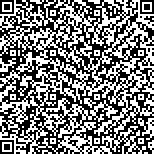|
|
| |
|
|
| 本文已被:浏览 1825次 下载 1475次 |

码上扫一扫! |
|
|
| 褐藻小粘膜藻的化学成分 |
|
徐秀丽,范晓,宋福行,杨永春,韩丽君,石建功
|
|
1.中国科学院海洋研究所 青岛266071;2.中国科学院研究生院 北京100039;3.中国医学科学院暨中国协和医科大学药物研究所 北京100050
|
|
| 摘要: |
| 应用正相硅胶、生物胶BioBeads、凝胶SephadexLH20柱色谱和反相HPLC等层析方法,从小粘膜藻(Leathesianana)中分离得到7个化合物,通过IR、MS、1D和2DNMR等波谱技术鉴定为4羟基苯甲酸(1)、3羟乙酰基吲哚(2)、2,3二溴4,5二羟基苯甲醛(3)、3溴4,5二羟基苯甲醛(4)、2,3二溴4,5二羟基苯甲基乙醚(5)、双(2,3二溴4,5二羟基卞基)醚(6)和3溴4(2,3二溴4,5二羟基苯甲基)5甲氧甲基苯二酚(7)。 |
| 关键词: 褐藻 小粘膜藻 化学成分 结构鉴定 |
| DOI: |
| 分类号: |
| 基金项目:国家自然科学重点基金资助项目,29932030号;国家“863”高技术发展计划专项,2001AA620403号 |
|
| CHEMICAL CONSTITUENTS OF BROWN ALGA LEATHESIA NANA |
|
XU Xiu-Li1,2, FAN Xiao3, SONG Fu-Hang1,2, YANG Yong-Chun4, HAN Li-Jun3, SHI Jian-Gong4
|
|
1.Institute of Oceanology,Chinese Academy of Sciences, Qingdao,266071;2.Graduate School of the Chinese Academy of Sciences,Beijing,100039;3.Institute of Oceanology, Chinese Academy of Sciences, Qingdao,266071;4.Institute of Materia Medica, Chinese Academy of Medical Sciences and Peking Union Medical College, Beijing,100050
|
| Abstract: |
| Leathesia nana is a brown alga of Leathesiaceae family and widely distributed in gulf of the Yellow Sea, China. The ethanolic extract of Leathesia nana showed selective cytotoxicity in our in vitro biological screening against several human cancer cell lines, including KB and HT-29 cell lines with LD50 12.65 and 40.60μg/ml, respectively. It showed indistinct cytotoxicity to normal cell NIH-3T3 with LD50> 50μg/ml. Thin layer chromatography indicated the presence of compounds positive to ferric chloride spray reagent. In order to searching for new bioactive lead compounds, we investigated the chemical constituents of the brown alga Leathesia nana.
Leathesia nana was collected in Weihai of Shandong Province, China in May 2002. The specimen was identified by Dr. Kui-Shuang Shao (Institute of Oceanology, Chinese Academy of Sciences, China). A voucher specimen (No.200216) is deposited at the Herbarium of Institute of Oceanology, Chinese Academy of Sciences, Qingdao, China. Brown alga Leathesia nana (8.25 kg, dry weight) was extracted with 95% EtOH at room temperature for 3×72 h. After the solvent was removed under reduced pressure at <40°C, a dark residue (710g) was obtained. The residue was suspended in water and then partitioned with EtOAc. The EtOAc soluble fraction (125g) was chromatographed over silica gel eluting with a gradual increasing Me2CO (0%–100%) in petroleum ether. The fraction eluted by 33% Me2CO in petroleum ether was decolored by column chromatography over Bio-Beads SX3 using CHCl3-EtOAc (1:2) and re-chromatographed over Sephadex LH-20 using petroleum ether-CHCl3-MeOH (5:5:1) to afford three subfractions. Separation of the subfractions yielded compounds 1–7 by reverse phase preparative HPLC using MeOH-H2O-AcOH (75:25:0.1) as mobile phase. Column chromatography was performed with silica gel (160–200 mesh, Qingdao Marine Chemical Inc. China) and Sephadex LH-20 (Pharmacia Biotech AB, Uppsala Sweden) . HPLC separation was performed on a chromatograph consisting of Waters 600 Controller, WatersTM 600 Pump and Waters 2487 Dual KAbsorbance Detector with an Alltima 250 cm×2.2 cm preparative column packed with C18 (10μm). TLC was carried out with glass precoated silica gel GF254 plates. Spots were visualized under UV light and by spraying with 2% FeCl3 in 95% EtOH. All solvents used were either analytical grade or spectral grade, or were distilled prior to use.
Melting points (uncorrected) were determined on an XT-4 micro melting point apparatus. IR spectra were recorded as KBr disks on a Nicolet Impact 400 FT-IR Spectrophotometer. NMR spectra were recorded on a Varian Inova 500 MHz spectrometer at 500.103 MHz for 1H and 125.762 MHz for 13C in acetone-d6 with TMS as internal standard. EIMS and HREIMS data were measured with Micromass Autospec-Ultima ETOF spectrometer. By spectroscopic methods including IR, EIMS, 1D and 2D NMR experiments, their structures were identified as 3-(hydroxyacetyl)-1H-indole(1), 4-hydroxybenzoic acid (2), 2, 3-dibromo-4, 5-dihydroxybenzylaldehyde (3), 3-bromo-4,5- dihydroxybenzaldehyde (4), 2, 3-dibromo-4, 5-dihydroxybenzyl ethyl ether (5), bis(2, 3-dibromo-4, 5-dihydroxybenzyl) ether (6) and 3-bromo-4-(2, 3-dibromo-4, 5-dihydroxybenzyl)-5-methoxymethylpyrocatechol (7). This paper deals with the structural elucidation of 1–7.
A variety of bromophenols have been isolated from marine red algae, a green alga, sponges and ascidians. Many of these compounds are antioxidant, feeding deterrent, α-glucosidase and enzymatic inhibitory and were reported to have effects of antimicrobe and anticancer. However, to the best of our knowledge, this is the first known brown alga containing bromophenols. Compounds 1–7 were isolated from this species for the first time. |
| Key words: Brown alga, Leathesia nana, Chemical constituents, Structural elucidation |
|
|
|
|
|
|
